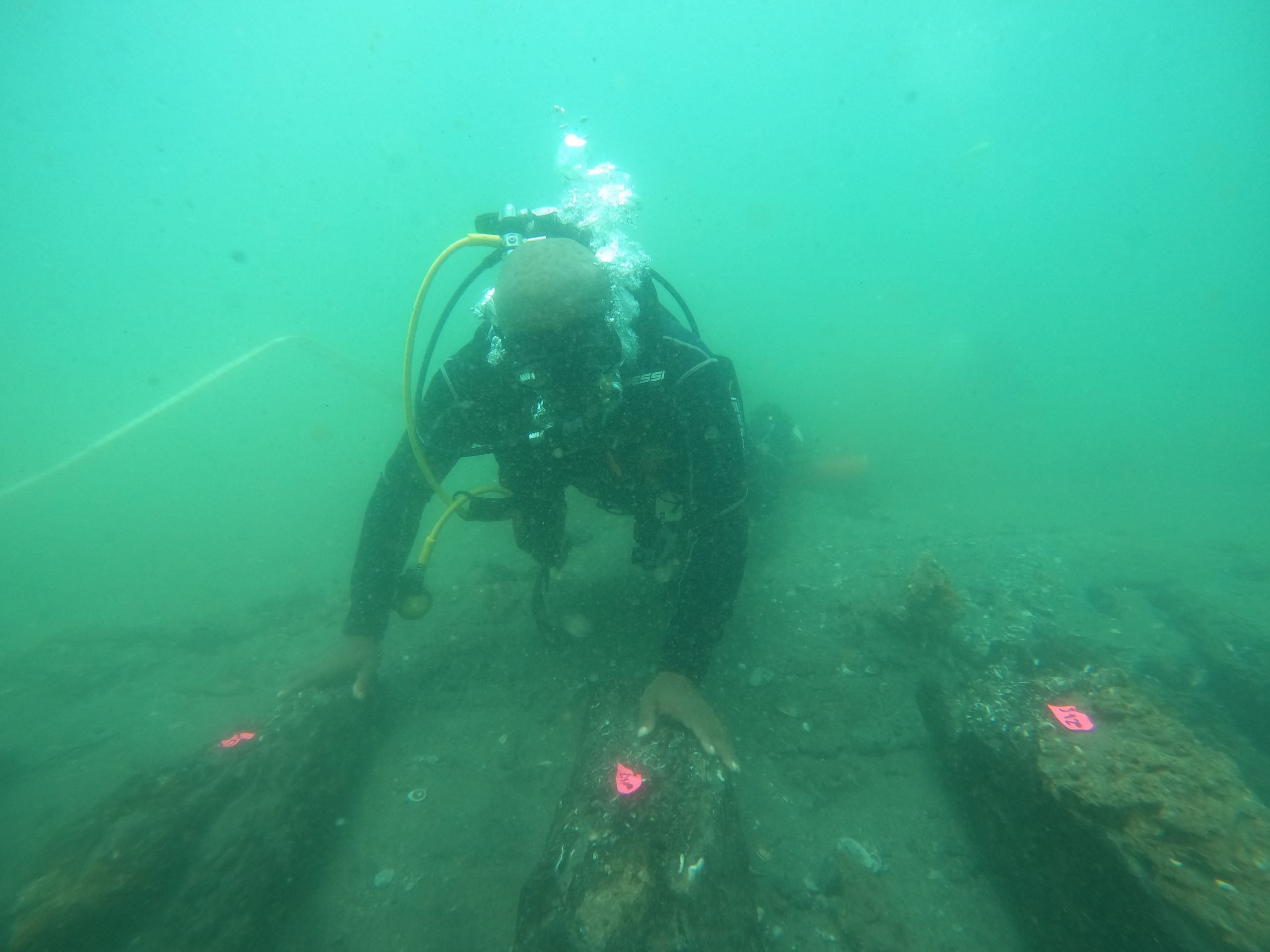
In a new study published on November 18 in the Journal of Maritime Archaeology, researchers say they believe a shipwreck discovered off the Kenyan coast could be a galleon from Portuguese explorer Vasco da Gama’s final voyage. The wreck was found around 1,640 feet from the Kenyan shore and only 20 feet below the water among the coral reef.
Vasco da Gama became the first European to journey around the Cape of Good Hope in South Africa from Portugal in 1497, pioneering a connection from Europe to the Indian Ocean that formed the foundation of the Portuguese trading empire. Da Gama was later the Viceroy of Portuguese India for three months until his death in 1524. He has been memorialized with several statues around the world and is buried in a lavish tomb in the Jerónimos Monastery in Lisbon.
The wreck was discovered just 20 feet below water level on the Kenyan coast. Image courtesy of Felipe Castro (2024).
The recently discovered shipwreck may have set sail as part of da Gama’s final Indian Ocean voyage—a journey which he made a total of four times before his death 500 years ago. Researchers believe it may have been one of around 20 ships part of this excursion: the São Jorge, which was captained by Fernando de Monroy and sank in 1524, making it one of the earliest European shipwrecks in the Indian Ocean. Eight similar Portuguese shipwrecks of similar age have previously been discovered in the area.
The discovery of the Portuguese shipwreck was made in Malindi, Kenya, in 2013 by the underwater archaeologist at the National Museums of Kenya, Caesar Bita, after he was alerted to the presence of the ship by local fishermen. Bita discovered elephant tusks as well as copper ingots at the site of the wreckage in the 2010s.
Vasco da Gama, as Viceroy of India and Count of Vidigueira. From Livro de Lisuarte de Abreu , c. 1560. Found in the Collection of Pierpont Morgan Library. (Photo by Fine Art Images/Heritage Images/Getty Images)
However, it was only this week that further research—led by a different research team but with assistance from Bita—was published, sharing the archaeologists’ speculation that the wreck may once have belonged to Vasco da Gama’s flotilla. The paper summarizes what is currently known about the ships discovered off the Kenyan coast and the history of Portuguese voyages between the 1400s and 1700s. The paper’s introduction calls itself “a critical review of the information available, a summary of what is known about them, and the questions that remain when we try to interpret and reconstruct their remains.”
A diving team discovered timber from the frame and hull of the shipwreck when exploring two archaeological trenches that had been dug into the area. The research, led by maritime archaeologist at the University of Coimbra, Filipe Castro, is set to continue and researchers are hopeful that they will verify the identity of the wreck. Future research is set to include archaeological surveys of over 15 miles of coral reefs running along the coast of the East African country.
Of his first interaction with the wreckage, Castro told Artnet News: “I saw it first last March, when Caesar invited me to come see it. It is larger than what we imagined for an early 16th-century ship, either a nau or a galleon. And it is enormous. The first feeling you get when you look at it first is that it is going to take time to dig it. Carefully, minding the details. And we are far from understanding the site: this phase of the excavations, when we don’t know exactly where we are, is really exciting. Is it the stern? Is it the bow? Is this a portion of the upper works? Archaeology is a lot of fun. And with this team, Caesar’s Team, the work is easy and the digging process under control.”
Lisbon, Portugal. The tomb of explorer Vasco da Gama in the church of Santa Maria in the Mosteiro dos Jeronimos, Monastery of the Hieronymites. The tomb is the work of sculptors Vitor Bastos and Costa Mota. The monastery is a UNESCO World Heritage Site. (Photo by: Ken Welsh/UCG/Universal Images Group via Getty Images)
Another possible identity for the ship was that it was a slightly later wreckage of the Portuguese ship the Nossa Senhora da Graça, which sank in 1544 and was not associated with da Gama who had died 20 years earlier.
If identified, the wreckage is not only a significant archaeological find but also may lead to the development of an underwater museum, a possibility that Kenyan authorities are apparently keenly looking into. Should it be the São Jorge, the discovery has been called “archaeological stardust” by experts.